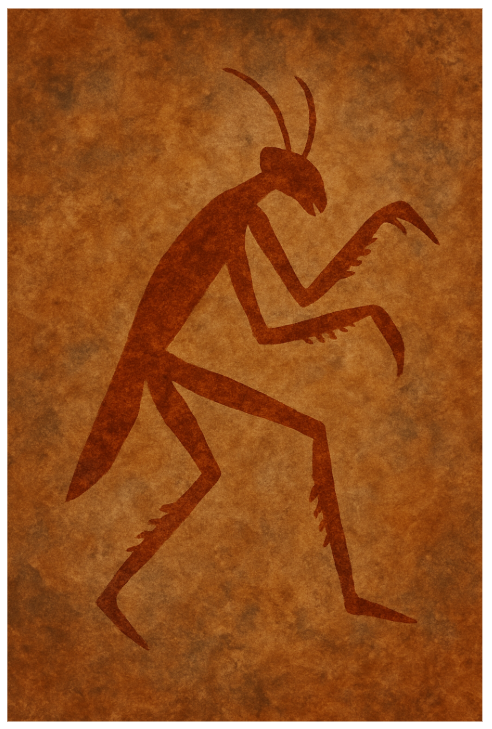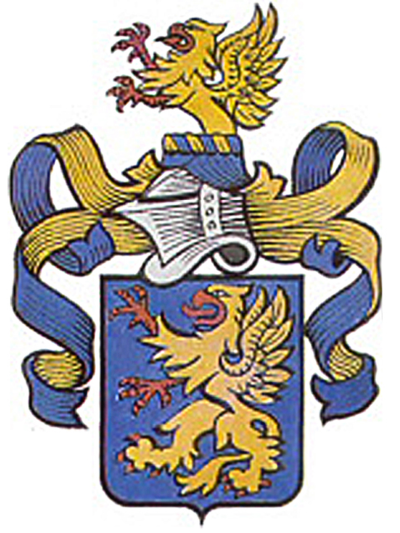Bushmen Stories

An introduction to Beginnings
G.R. von Wielligh first encountered the Bushmen while traveling with his father in 1870. Later, as he worked and traveled extensively throughout Namaqualand and the Northern Cape, he met many Bushmen and came to realize that they were truly artists. This artistry was clearly evident in their rock drawings and in the masterful way they told their stories.
Von Wielligh spent time with entire families in the Boesmanland, and when he witnessed their stories come to life around the campfire through singing and dancing, he experienced the full impact of what they were conveying to their people. The stories weren't just entertainment—they were living traditions that carried deep meaning and wisdom.
Von Wielligh carefully documented all these stories, and about 100 years ago, four books were published in Afrikaans, covering many aspects of Bushmen culture and, in particular, their rich storytelling tradition.
This first story serves as an excellent introduction to the main characters in their cycle of ancient tales—names and beings that will appear throughout different stories. The Bushmen used these stories to make sense of their world and to explain it to their children. There is no doubt that they were keen observers of nature and life, and their understanding of our world is often underestimated.
Here is a profound passage from this story that captures their deep wisdom:
"It is said that before we are born, and again after we die, we dwell as if asleep in that eternal, shadowy dream-world — and only the most vivid of our dreams are ever cast into the brief flash of light we call life."
The full "Beginnings" story and other translated tales are available as ebooks at Smashwords and other outlets.
Beginning
The Bushmen believe that in the beginning, the world was covered in a shadowy darkness. The sun, moon, and stars had not yet come into being. It was always night—what they call Ga. The darkness they called "Gagen," and these two were present all over the world.
Night (Ga) and his partner, Darkness (Gagen), existed as "ou volk"—ancient, human-like beings from the very earliest times. No one, not even today, knows how old they are or where they came from. What we do know is that old Night and his wife, Darkness, still live in the same cave they always have, deep in the Ghost Mountains of the Kalahari Desert.
They never had a son—only three daughters. And so they lived their quiet, shadowed life in that stone cave, while the world outside remained cloaked in eternal night.
It is said that before we are born, and again after we die, we dwell as if asleep in that eternal, shadowy dream-world — and only the most vivid of our dreams are ever cast into the brief flash of light we call life.

The Three Daughters
The three daughters were called Kou (Mountains), Kaun (Plains), and 'Khwa (Waters). They loved to dance, and their parents took great joy in watching them.
Travellers from distant places would sometimes visit, drawn by tales of the girls and their graceful dancing.
Their trickster god was known as Kaggen, and he could take many forms — though most often, he appeared as an insect: the praying mantis.
This strange little creature has a round belly and long, stick-like limbs, with thick front legs that it holds together like hands in prayer.
One day, the praying mantis sat on a bush, watching the daughters dance. He longed for a closer look, so he changed himself into an antelope — about the size of a hartebeest. With wide, curious eyes, he crept nearer, drawn by their graceful movement.
Ga spotted the buck at once. Quietly, he slipped behind a bush with his bow and arrows, waiting for the creature to come closer.
But Kaggen, in the form of a hartebeest, saw Ga too — and pretended not to notice. He simply stood watching the girls dance, as if enchanted.

Ga was an expert hunter, and at that distance, this buck’s name might as well have been biltong — strips of cured, dried meat ready for eating.
His poisoned arrow struck Kaggen cleanly in the neck. The antelope bolted a few steps, staggered, and then collapsed in its tracks.
The Magic Resurrection
The whole family gathered around their next meal and began gutting and skinning the antelope. Once it was laid out on its own hide, Ga cut the body into five manageable pieces.
He took one of the hindquarters and loaded it onto the shoulders of Gagen, the mother. Then he picked up the two front quarters — placing one on the shoulders of the eldest daughter, Mountains, and the other on the second daughter, Plains. The head, with the backbone still attached, he gave to the youngest, Waters.
Finally, Ga wrapped the remaining hindquarter and the intestines in the skin, hoisted the bundle onto his own shoulders, and led the way home.
Nothing was wasted. The whole hartebeest was carried off in five neat bundles.

But then something strange happened.
The head began to blink — slowly, painfully — and let out a groan:
“Why did you hurt me so badly?”
Waters gasped and shouted to the others that the head was speaking to her.
But they ignored her. The youngest was always full of stories.
A moment later, she cried out again — louder this time —
“It’s blinking! It’s alive! The head is talking to me!”
Still, the others brushed her off and kept walking toward the cave, not believing a word.
The third time Waters shouted, her voice carried real urgency.
“The head is blinking! It’s talking to me again!” she cried.
And when she threatened to throw it down and leave it right there, Ga finally stopped and turned to see what all the commotion was about.
When the family reached the youngest daughter, they all froze — every part of the antelope had begun to tremble.
Ga set his bundle down and unwrapped the folded skin. “Let’s take a rest,” he said. “The women could use a break anyway.”
One by one, they laid their pieces of the buck down on the stretched hide.
Then something truly strange happened.
The four limbs began to wriggle, each one twisting slowly toward the head. The family stepped back in shock as the quarters found their place and joined themselves neatly to the backbone.
Then the intestines slithered across the hide and crept into the open abdomen, winding into place as if they had never been cut.
The buck, now reassembled, rose carefully to its knees — and then crawled back into its own skin. The buck took a final good look at them, shook itself back into shape, and ran off into the distance. And there, in the shimmering heat far away, it shifted and shrank — changing back into the insect the Bushmen call Kaggen, and the Boere call a Hottentotsgod — the praying mantis.

This was their first encounter with the trickster god. And from that day forward, they treated him with deep respect, for they had seen his magic with their own eyes.
As for Kaggen, he liked the look of those girls — and decided he would return when they were older.
